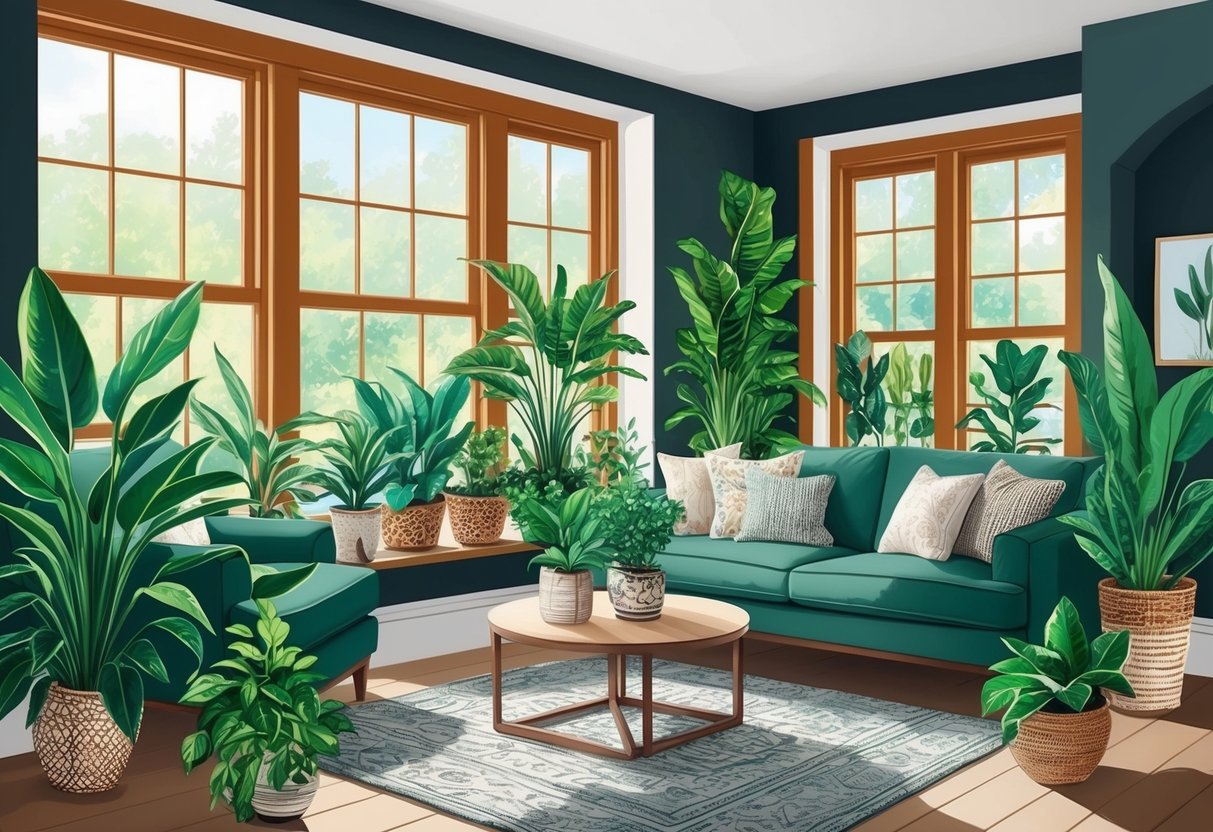
Finding the right houseplants for low light can be challenging, especially for those living in homes or apartments with shaded rooms or minimal sunlight. There are several shade-loving indoor plants that not only survive but thrive in dark corners, instantly brightening up any interior space.
From the resilient ZZ plant and snake plant to unique options like slipper orchids and a variety of ferns, these species can transform an overlooked area into a lush, inviting spot.
For anyone searching for indoor plants that tolerate low light, certain varieties are well-known for their ability to adapt and flourish without constant sun exposure. Options such as the Calathea, Blue Star Fern, and Arrowhead Plant are popular choices among plant enthusiasts looking to fill their homes with vibrant greenery.
Additional suggestions can be discovered by exploring advice from gardening experts, such as the list of best low light houseplants recommended by sites like HGTV and Gatheraus.
Understanding Shade-Loving Plants for Indoor Spaces
Many shade-loving houseplants are adapted to thrive in areas with minimal sunlight, making them ideal for dark corners inside homes. These indoor plants feature unique traits and offer practical benefits, easily fitting into a variety of room layouts.
Key Characteristics of Shade-Tolerant Plants
Shade plants typically come from forest understories, where sunlight is filtered or limited. Their broad leaves help maximize light absorption, enabling photosynthesis in lower-light environments.
Many varieties, such as ferns, snake plants, and peace lilies, have a natural tolerance for indirect light and fluctuating humidity levels.
Common traits include:
- Dark green, sometimes glossy foliage
- Compact growth habits
- Slow to moderate growth rates
Such plants do not require—and may even suffer in—direct sunlight. Their adaptability means they can adjust to varying light conditions, and some, like the Boston fern or the snake plant, stay healthy with very little care.
Benefits of Low-Light Indoor Plants
Low-light indoor plants require less maintenance than many sun-loving varieties. These houseplants can help purify the air, reduce stress, and create a calming environment in workspaces or apartments where natural light is scarce.
Benefits include:
- Air quality improvement: Many species, like English ivy and Dieffenbachia, can filter toxins from indoor air.
- Low maintenance: These plants need less frequent watering and can tolerate occasional neglect.
- Space versatility: Shade-tolerant plants adapt to offices, bedrooms, and bathrooms where other plants would fail.
A broad range of low-light houseplants provides options for people who want greenery without the challenges of high-light requirements. This makes them suitable for urban apartments, basement rooms, or windowless offices, as shown by recommendations in studies on shade-friendly houseplants.
Ideal Locations for Shade-Loving Houseplants
Shade-tolerant indoor plants fit well in areas beyond direct reach of windows. Suitable spots include north-facing rooms, bathroom shelves, hallways, and corners beneath staircases.
Table: Good Locations for Shade Plants Indoors
| Room Type | Recommended Plant Position |
|---|---|
| Living Room | Corners far from direct windows |
| Bedroom | Nightstands, dresser tops |
| Bathroom | Shelves near the shower |
| Office | Desks away from artificial lighting |
| Hallways | Console tables along walls |
Placing shade plants in these locations brightens the space without risking leaf burn or dehydration. These adaptable houseplants thrive with just a little indirect or artificial light, making it easy to introduce greenery throughout the home or office.
For more ideas, explore options from this expert guide to low-light indoor plants.
Top Shade-Loving Indoor Plants to Brighten Dark Corners
Shade-loving houseplants are ideal for rooms with limited sunlight, such as north-facing spaces or interiors with small windows. Many low-light indoor plants can tolerate neglect, recover from occasional missed waterings, and still add vibrant foliage and cleaner air to living spaces.
Pothos
Pothos is a popular trailing plant that does well in a range of light conditions, including low light. Known for its heart-shaped, waxy leaves in variegated shades of green, yellow, and white, this plant can tolerate occasional drying out and thrives with minimal care.
Pothos is well-suited for hanging baskets or shelves where its vines can cascade and brighten any dim spot. It’s important to allow its soil to dry out between waterings to avoid root rot.
Pothos is great for offices and apartments because it improves air quality by filtering common toxins. Pruning keeps the plant full and encourages new growth.
For more options similar to pothos, see other low light houseplants.
Snake Plant
The snake plant, or Sansevieria, offers upright, sword-like leaves that range from deep green to yellow-edged or even silvery patterns. It is among the top low-light indoor plants, as it remains healthy in indirect or artificial light and survives extended periods without watering.
Snake plants help purify indoor air by absorbing toxins such as benzene and formaldehyde. This plant fits perfectly in bedrooms, offices, or corners where other houseplants may struggle.
Maintenance is minimal—water less frequently and avoid overwatering, especially during winter.
A simple table shows care highlights:
| Attribute | Snake Plant |
|---|---|
| Light | Low to bright indirect |
| Water | Every 2–4 weeks |
| Humidity | Low to moderate |
| Toxicity | Mildly toxic to pets |